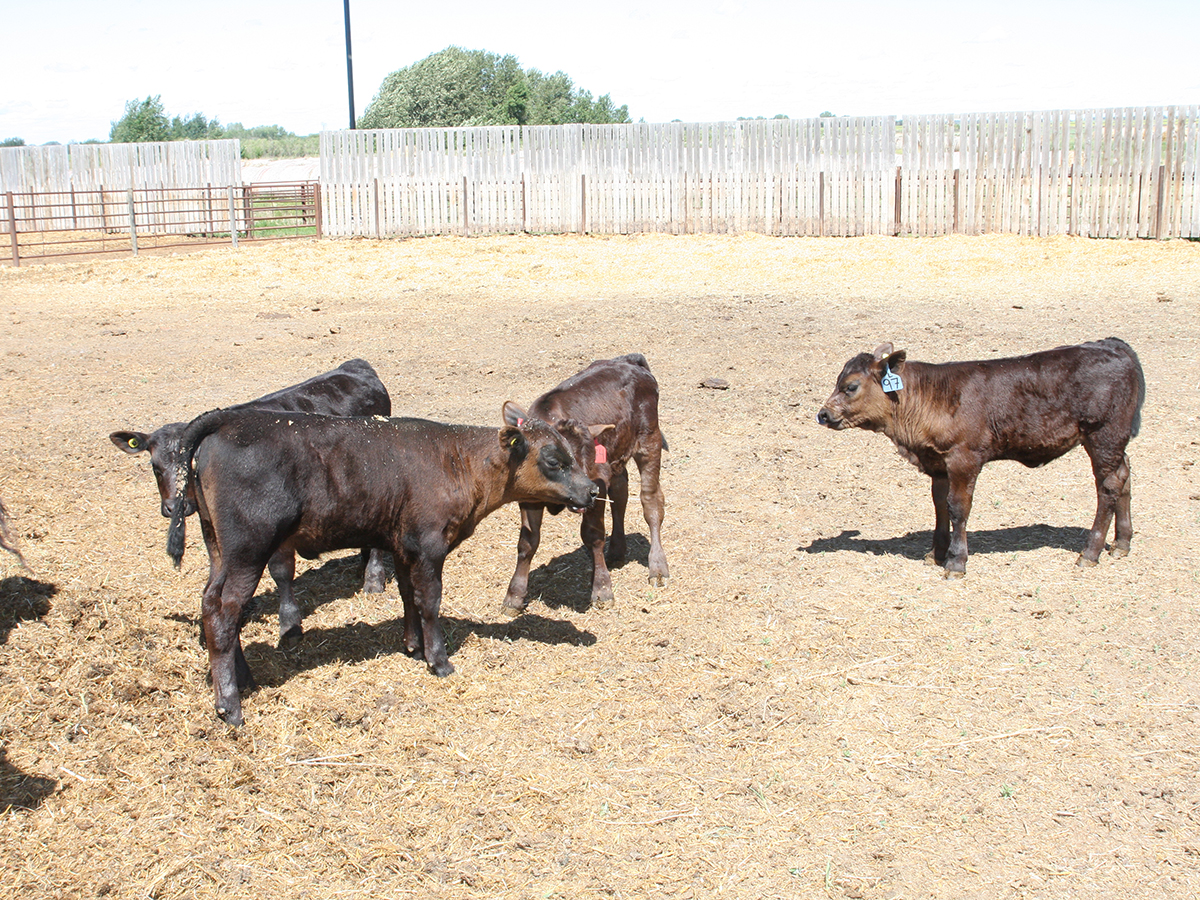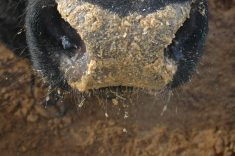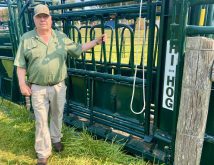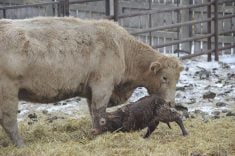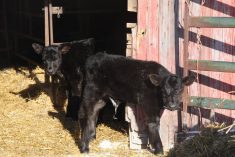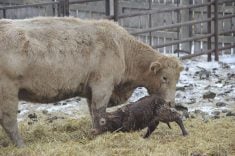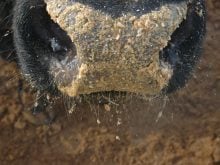What’s the value of using genomic testing to select cattle? About 100 pounds a calf.
Those were the results of a recent research project looking at using the new technology in the seed stock sector, accorning to Kajal Latimer, director of science and technology with the Canadian Angus Association.
“It was just a small project where we did a validation of our genomic predictions for seed stock cattle, where I followed the calves for these genomically tested goals and validated the predictions that were accurate,” said Latimer at the Results Driven Agriculture Research showcase held near Leduc, Alta.
Read Also

Feds propose overhaul of chronic wasting disease control program
Chronic Wasting disease control program getting updated by Canadian Food Inspection Agency with feedback encouraged from producers.
She highlighted the earlier work to demonstrate why she’s now working on a project to leverage that same technology with commercial producers to support better selection in the Canadian cow herd.
When the researchers looked at the production records of calves in commercial operations, they found that, on average, calves from bulls the researchers predicted would perform lower, did perform lower. Calves from bulls that the researchers predicted would perform higher, did perform higher.
“If you look at the average yearling weight, there’s a difference of about 100 pounds between the calves,” she said.
Latimer, whose current project received funding from RDAR, said the support goes a long way toward making an impact in various agricultural industries. The four-year project has just completed its first year.
“These are preliminary results I’m going to be sharing with you, but we’re very excited about them,” she said.
The Canadian beef industry’s seed stock sector can make good genomic predictions, but the same tools aren’t available for the commercial sector. There are both challenges and opportunities in the sector right now.
Drought has been a major problem, and the Canadian cow herd is the smallest it has been since 1964. Latimer said the industry is benefitting from high feeder calf prices, lower prices of feed and good access to feed. There is also a high demand for beef products. She said now may be the perfect opportunity to rebuild the cow herd.
Her project takes information from the seed stock industry and leverages data that is related to performance information and genomic information. This information will come together to build a system that can be used by the commercial producer. The project is a partnership with the Canadian Angus Association and the Canadian Hereford Association. The Canadian Charolais Association is also expected to join.
“We will make our data available so the tool can be available to commercial producers,” said Latimer.
Telus Agriculture and RDAR both played important roles in this project. Latimer said she was interested in creating a tool that works with the support of a team and technology.
“The second objective is to have a really robust prediction so genomic predictions are accurate enough that they make the investment of doing that genomic test valuable,” she said.
Some producers are using smart technology, as well as on-farm record keeping systems. They are working closely with their veterinarians and nutritionists. Some producers are still using a pen-and-paper calving book that they keep in their pocket, she said.
“I have worked with the whole gamut and our goal is to make it easier for those wonderful people who do just use pen and paper to maybe make electronic records,” said Latimer.
Producers were invited to enrol in the project, with a capacity for 10,000 cattle.
“Within weeks, we had 19 producers, and we got just about 10,000 head,” she said.
The producers allowed the researchers to be present at branding. The researchers sampled all the calves of the calf crop, recorded all the calves and are now following the calves as they are retained for breeding purposes or shipped for feeding and slaughter.
“To date, we’ve sampled almost 8,000 of these, and that includes parent verification, so we can start tying that information back to the registered bulls,” she said.
Half of the bulls are Angus and half Hereford, with some other breeds in there as well. Half of the calves are heifers, and the other half are steers. The researchers have managed to capture calving intervals, calving ease and weight information.
“And as we follow these calves, we anticipate getting information from the feedlot, so in and out days, average daily gain and carcass quality information,” she said.
Because the researchers have a DNA sample of all the calves, they’re able to take the data and link it back to the sire or dams. The key is to tie the DNA sample and the genomic information to keep data together between sectors.
“That is the key, really, to getting that carcass quality information from the abattoir back to linking to the genetics,” she said.
The project also uses genomic evaluations, and the data and analytics that are attached.
“But then there’s the application support,” she said.
Latimer spoke about Zoetis and the firm’s model of maintaining customers by phoning them with their results, instead of just emailing them. This creates a relationship between the company and the producer.
“We want to make sure that what we do while we’re building this, we’re doing the science and it’s really good science, but we’re also what we call an extension or support system,” she said.
Herdtrax is a farm management system, built by veterinarians and used for monitoring herd health, that is available through Telus Agriculture as Telus Animal Record Management.
“It’s no longer distributed to commercial producers as Herdtrax, so we might label it so producers could still access it and access support on how to use it through their breed associations,” she said.
Telus Agriculture has been important in terms of making visual charts, while Abacus Bio has made economic selection indexes. Economic indexes combine all the traits and weigh them according to their impact in a commercial operation, giving the producer one number with which to work.
Abacus Bio is also working to develop a Canadian index for commercial producers to use, using all the genomic predictions. Producers wanted to include important traits they had identified for their operation, so this was included in the data visualizations.
“I hope I’m communicating that this is an industry led, producer led activity,” she said.


